Table of Contents

When we think about cars, we usually focus on engine power, sleek design, or high-tech features. But how often do you stop to think about the complex fluid systems that keep these machines operating?
Each fluid has a specific purpose necessary for the optimal functioning of your vehicle, from the iconic engine oil that lubricates its core to the enigmatic transmission fluid which allows seamless gear changes.
These fluids are so important that if their levels fall too low they can cause serious damage to your car. To help you better understand this topic, here are what I consider as being seven automotive liquids along with their purposes & how they should be checked.

What Are The 7 Fluids In A Car?
Fluids are constantly moving through an engine and other mechanical parts in order to prevent them from seizing up due to friction and heat. They also contribute towards maintaining a hygienic environment within a vehicle. These are among some commonly found types:
- Oil
- Radiator Fluid
- Transmission Fluid
- Power Steering Fluid
- Brake Fluid
- Air Conditioning Coolant
- Windshield Washer Fluid
Let’s read about them in detail…
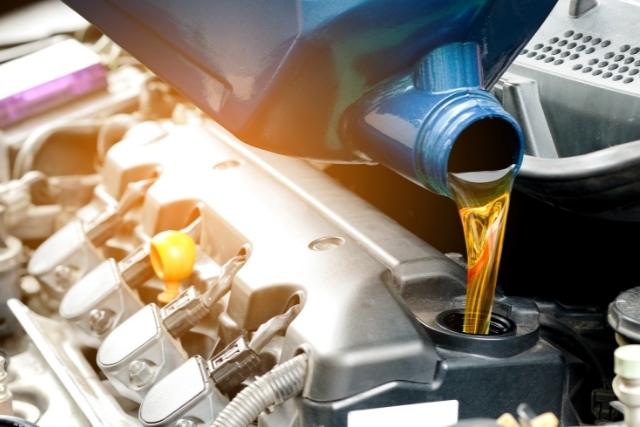
Engine Oil:
If you possess some knowledge about cars, you are likely aware of the significance of motor oil. The engine has several moving parts which generate heat due to friction. Lubricating these parts will minimize the chances of overheating.
To avoid damaging your engine ensure it has enough oil. Insufficient levels of oil can destroy important constituents in the engine and even fail an entire system.
However, if your vehicle does not have this mechanism then you need to inspect its contents regularly.
For it to last longer one must carefully observe its level. It’s advisable to check the oil level once every month or before traveling long distances. Normally, oil should be changed after covering 3000 miles but this varies depending on the kind of oil.
How To Check The Engine Oil Level?
Check levels when the engine is cold but after running it briefly like driving for a few minutes. Then park on the level ground surface, pop the hood open, and locate a dipstick or oil cap.
Take this out, wipe it clean with a cloth before reinserting it fully back into the tube, wait for a few seconds, and remove it again. Check markings at the bottom end against whether they’re between two lines indicating maximum and minimum levels meaning if too low add some until reaching the upper marker which is the normal range then stop there.
Also, take note of its color while doing so because a very dark brown/black appearance could mean the imminent need to change oil as a preventive measure against potential bigger problems later on.
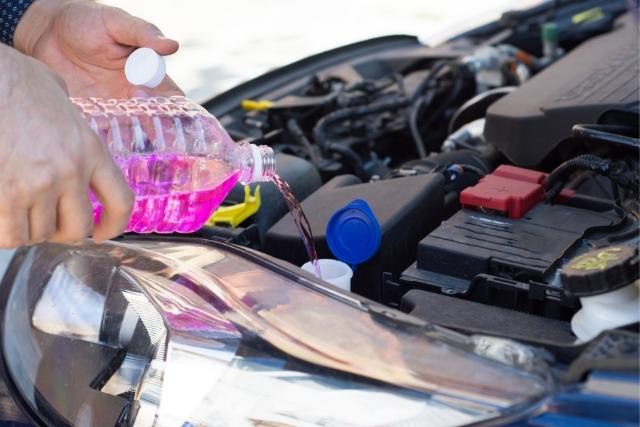
Radiator Fluid:
Antifreeze coolant liquid also known as radiator fluid prevents car engines from overheating by absorbing excessive heat produced within an internal combustion cycle (which happens when air & fuel mixture ignites).
It carries away this heat to radiators where it’s released into the surrounding atmosphere through fans driven either electrically or mechanically.
If the level drops below the required point then the engine becomes extremely hot thereby causing expensive damage since the average temperature ranges between 2000°F-4500°F.
how can one check the coolant level in a car?
Ensure that the motor is not warm. This will help you prevent scalds from hot radiators.
Pop up the hood and open it. Check for the level of fluid, If necessary, top up with more coolant until you can see it.
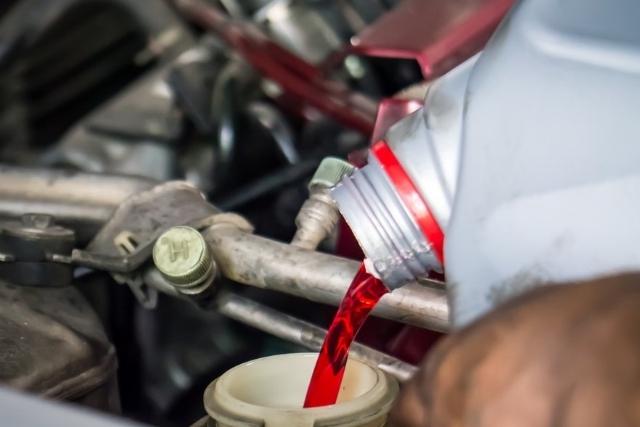
Transmission Fluid:
Transmission oil lubricates various parts in a transmission such as gears, valves, clutch, etc., similar to what engine oil does with an engine’s moving parts; it also helps keep these inner sections cool.
It is red most times but blue and yellow can also be seen. Unlike engine oils, those used for transmissions are not often changed or replaced too frequently.
Some experts suggest replacing every 100kms but please refer back to your manual for confirmation on this matter.
If it turns dark brown or black change immediately!
How To Check The Transmission Oil?
First, park your vehicle on a flat surface and then start its engine. Give it some time to warm up and later inspect the transmission fluid level. The transmission oil dipstick is usually red and second among two dippers.
Refer to the owner’s manual if you cannot find it. Pull out the dipstick from the holder, wipe it clean, and re-insert it again to check whether there is enough liquid inside or not. This dipstick has hot as well as cold marks; so don’t allow it to go down below those hot points.
If below cool lines top up with more fluids. Review level one more time. Unless something wrong appears in your gearbox, it’s better off if you can check what’s left inside every six months.

Power Steering Fluid:
Nowadays all cars come with power steering and for good reason too – have you ever driven a vehicle without one? It is like trying to do an upper body workout while controlling the car at high speeds which can be very dangerous indeed!
Power steering fluid is used to lubricate this system so that everything moves smoothly; if there’s not enough of it though then things may start feeling rather stiff behind the wheel i.e., hard on arms when turning corners, etc.
How Can I Check The Power Steering Fluid?
To start with locating where your reservoir tank is situated within the engine bay area usually towards the passenger side under the
hood; sometimes labeled either as “Power-steering” or simply just “steering”.
This tank is usually transparent but clean if dirty before opening (no need for cleaning inside). You will not have to open up anything here because all necessary work can be done externally only!
Open up the reservoir cap by twisting it off counterclockwise until loose enough so that it comes off easily without much force applied. Remove the dipstick from the top part of the cap (it looks like a small rod sticking out) then wipe dry using a cloth before re-inserting back into the same position from where taken originally.
Insert fully down again making sure both ends touch the bottom surface completely flat against each other thereby enabling accurate measurement reading later on.
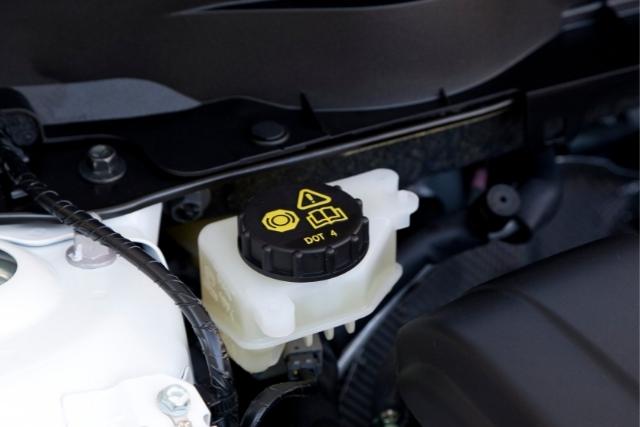
Brake Fluid:
Your vehicle’s braking system plays an important role while driving Brake effectiveness contributes significantly towards avoiding fatalities associated with road accidents Fluid therefore helps brakes operate When stepping on the brake pedal, fluid decelerates the car.
However, without sufficient fluid brakes become ineffective If only brakes stop functioning properly look at liquid first
How To Check The Brake Oil?
To verify the brake fluid, open up the hood and locate the brake oil reservoir at the end of the engine. Clean out the reservoir, unscrew, and examine the cap as well as a dipstick for oil grades.
If it’s below the minimum level, add more oil until it reaches the required level or at least half an inch from the top. Refer to your owner’s manual which should tell you what kind of oils to use.
Screw it back on within 15 minutes to keep dirtiness out. Change if cloudy looking or blackish colored or driven over 50000 miles.
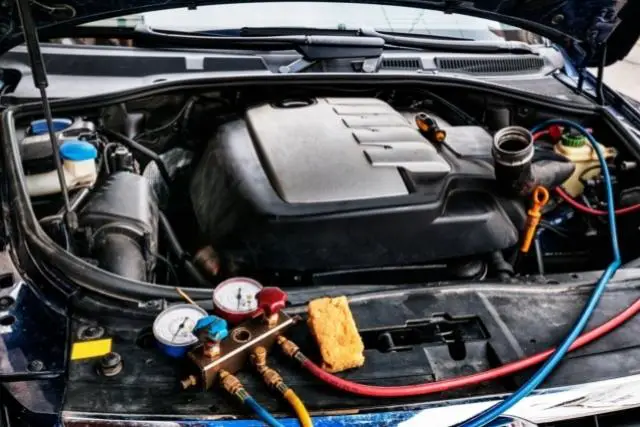
Air Conditioning Coolant:
It is difficult not to use air conditioning in summer while driving because of high temperatures. The major part here is coolant for air conditioning systems also known as refrigerant or freon.
When coolant decreases then the car won’t cool down properly that’s why if it blows air but doesn’t cool – refill with more freon.
If you have an A/C gauge and a Freon kit then can refill it at home otherwise professional help is needed.
How To Refill The Air Conditioning With Freon?
To refill freon into your car’s AC one needs an AC gauge together with a freon charging kit. Open up the engine bay so that you see a low-pressure port for AC; connect the pressure gauge using a provided kit.
If its pressure drops below 25 psi (pound per square inch) just press a lever on the kit thus adding some more freons into the system through this port till gets the right readings then stop.
Check how many pounds does manual says should be used per square inch depending on temperature conditions outside. It should be between 35-45 psi. Watch the video to learn how anyone can refill air conditioning with Freon.

Windshield Washer Fluid:
Clean windshields are crucial for safe driving hence washer fluids are necessary to maintain them clean. Washer fluid helps in easy cleaning of windshields.
How To Check Windshield Washer Fluid?
To check the windshield washer fluid, open up your hood and locate a container that is marked with “Windshield” or “Washer”.
You can see through this container without opening cap to know if the level has gone down; when it does then add some more liquid. To get rid of bugs and dirt from windscreens use this type of fluids.
It is recommended that you check fluid levels every two weeks. These are 7 car fluids & their checks.
Other Fluid:
Not only this one but there is another too, which is only found in rear-wheel drive (RWD) or four-wheel drive (4WD) cars. Have a look at it.
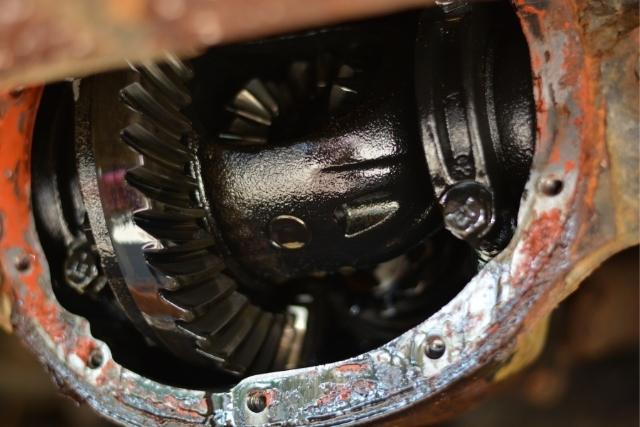
Differential Fluid:
This kind of oil is typically used on cars with either rear-wheel drive or 4-wheel drive (4WDs). The differentials found on these types of vehicles are separate from transmissions and need lubricating fluids for proper functioning.
For example transmission grease it also helps reduce friction between moving parts while keeping them within a suitable temperature range.
In addition to ensuring that outer wheels rotate faster than inner ones when making turns, thus enabling smooth cornering; differentials maintain correct distances between these wheels during such maneuvers thereby facilitating easy steering.
Due to its location under the backside of the vehicle, most people tend not to remember servicing differential often.
How To Check The Differential Fluid?
Checking differential fluid may be either easy or difficult depending on what car model you have; some require removing covers while others have drain plugs so refer owner’s manual for details about where exactly these items are situated as well type needed
To find the differential, which is a metal piece that looks like a pumpkin between the back wheels, you should park your car on level ground. Use brake cleaner and a steel brush to clean around the drain port.
Open the port with an inch ratchet, check if there’s enough fluid by dipping in your finger, and add more if necessary. Fill the liquid using a long spout until it comes out of the hole then turn the plug clockwise to tighten after wiping off any oil that may have spilled.
Check the owner manual for change intervals otherwise, get help from the mechanic if required.
Conclusion:
In closing, these are seven fluids every person should know how to change in their vehicle. They keep your car healthy and should be checked frequently. Find them in your owner’s manual and learn when each one needs replacing so you can always maintain a well-running machine for years to come!
Some vehicles also require checking motor oil, radiator fluid, transmission fluid, power steering fluid, brake fluid, air conditioning coolant as well as windshield washer fluid along with differential fluid (if applicable).
Thanks again for reading; I hope this article helped educate you about these seven automotive liquids – stay tuned next week!




























































10 thoughts on “What Are The 7 Fluids In A Car (Comprehensive Guide) – Flawless Car Guide”